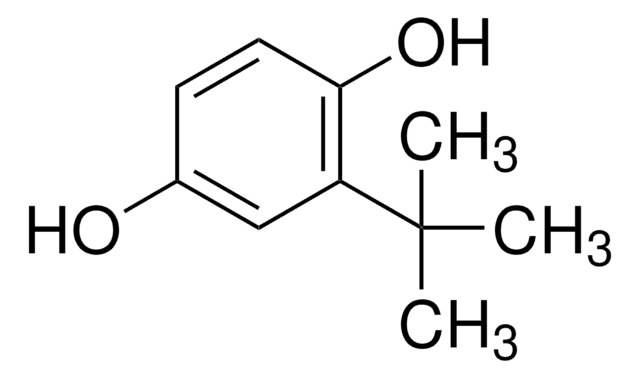PHR1304
Butylated hydroxyanisole
Pharmaceutical Secondary Standard; Certified Reference Material
Synonym(s):
2(3)-t-Butyl-4-hydroxyanisole, 2(3)-t-Butylhydroquinone monomethyl ether, BHA
About This Item
Recommended Products
grade
certified reference material
pharmaceutical secondary standard
Quality Level
agency
traceable to Ph. Eur. B1212000
traceable to USP 1083008
vapor density
6.2 (vs air)
API family
butylhydroxyanisole
CofA
current certificate can be downloaded
autoignition temp.
599 °F
technique(s)
HPLC: suitable
gas chromatography (GC): suitable
mp
58-60 °C (lit.)
application(s)
pharmaceutical (small molecule)
format
neat
storage temp.
2-30°C
InChI
1S/C11H16O2/c1-11(2,3)9-7-8(13-4)5-6-10(9)12/h5-7,12H,1-4H3
InChI key
MRBKEAMVRSLQPH-UHFFFAOYSA-N
Looking for similar products? Visit Product Comparison Guide
Related Categories
General description
Application
Analysis Note
Other Notes
Footnote
hcodes
pcodes
Hazard Classifications
Aquatic Chronic 2
Storage Class
11 - Combustible Solids
wgk_germany
WGK 2
flash_point_f
241.9 °F - Pensky-Martens closed cup
flash_point_c
116.6 °C - Pensky-Martens closed cup
Choose from one of the most recent versions:
Already Own This Product?
Find documentation for the products that you have recently purchased in the Document Library.
Customers Also Viewed
Our team of scientists has experience in all areas of research including Life Science, Material Science, Chemical Synthesis, Chromatography, Analytical and many others.
Contact Technical Service







